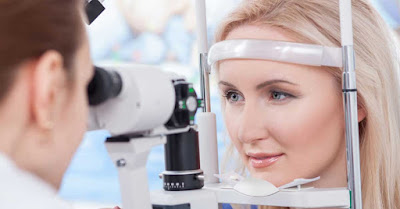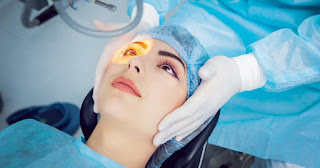The eyes are the most sensitive
organs of the human body that enable us to see the world around us. The eyes
function 24 hours a day without taking any rest. The proper functioning of the
eyes is extremely important for leading a normal life, however, our eyes are
vulnerable to various problems that can either be congenital or acquired later
due to unhealthy Lifestyle practices or pertaining medical conditions. As per the
best eye surgery hospital in India,
the number of patients complaining about various eye problems has
increased tremendously in the past decade. Some of these problems include low
vision and legal blindness.
Medically, low vision is
described as a chronic visual impairment which can not be corrected with the
help of prescription eyeglasses or contact lenses. Low vision is usually caused
by a pertaining eye disease. It is vision loss that hinders one from performing
daily activities that are needed to be done daily. You can find some of the best doctors for low vision surgery in
India in Aakash hospital, which is
the best eye surgery hospital in india.
Legal blindness, on the other
hand, is a level of visual impairment that has been defined by the law to limit
certain allowed activities such as driving or to determine government-funded
disability schemes for the visually impaired in the forms of benefit such as
education, monetary assistance, service, etc. In India blindness legally refers
to a condition where a person suffers from either total absence of sight, or
visual acuity not exceeding 6/60 or 20/200 in the better eye even with
correction lenses, or limitation of the field of vision subtending an angle of
20 degrees or worse.
As low vision has includes
different kinds of sight loss like blind spots, poor night vision, and problems
with glare to an almost complete loss of sight so, it is important that you get
different kinds of tests done other than the usual ones as these are more
detailed eye examinations which make it easier to understand the root cause of
the problem that has been hindering your vision.
There are different kinds of
solution to help improve low vision. They include medical treatment like
injectable medicine which not only stops vision loss but also improves it.
Surgery and medication are two solutions that are unbeatable in curing low
vision. Low vision surgery in india is
quite expensive and can cause a dent in your pockets, but it is the best
medical solution available to treat the low vision. Best low vision hospitals
in India aim at providing the best treatment to the patients and ensure
satisfactory results. Legal blindness on the other hand can be treated by the
use of corrective lenses. In certain cases, antibiotics and antiviral drugs may
also prove to be helpful. Patch therapy may also be used in certain cases.
The best eye surgery hospital in
India has highly trained and
experienced ophthalmologists and optometrists who will not only ensure that the
services that you receive are up to mark but also guide you on how to manage
the problem at home. You will be provided with a brief counseling about your
medical condition and all of your needs and requirements would be taken care
of.
Along with that low vision, aids
can also be used and it is pertinent to mention that diet and nutrition also
affect the vision of a person so that should also be taken into consideration. Zinc,
Selenium, Vitamin A, Vitamin C, and Vitamin E are all nutrients and minerals
that can help improve vision and dietary supplements can be taken in their
place as well. Experts will guide you with setting your diet and intake of the
required nutrients and vitamins for the surgery too.





